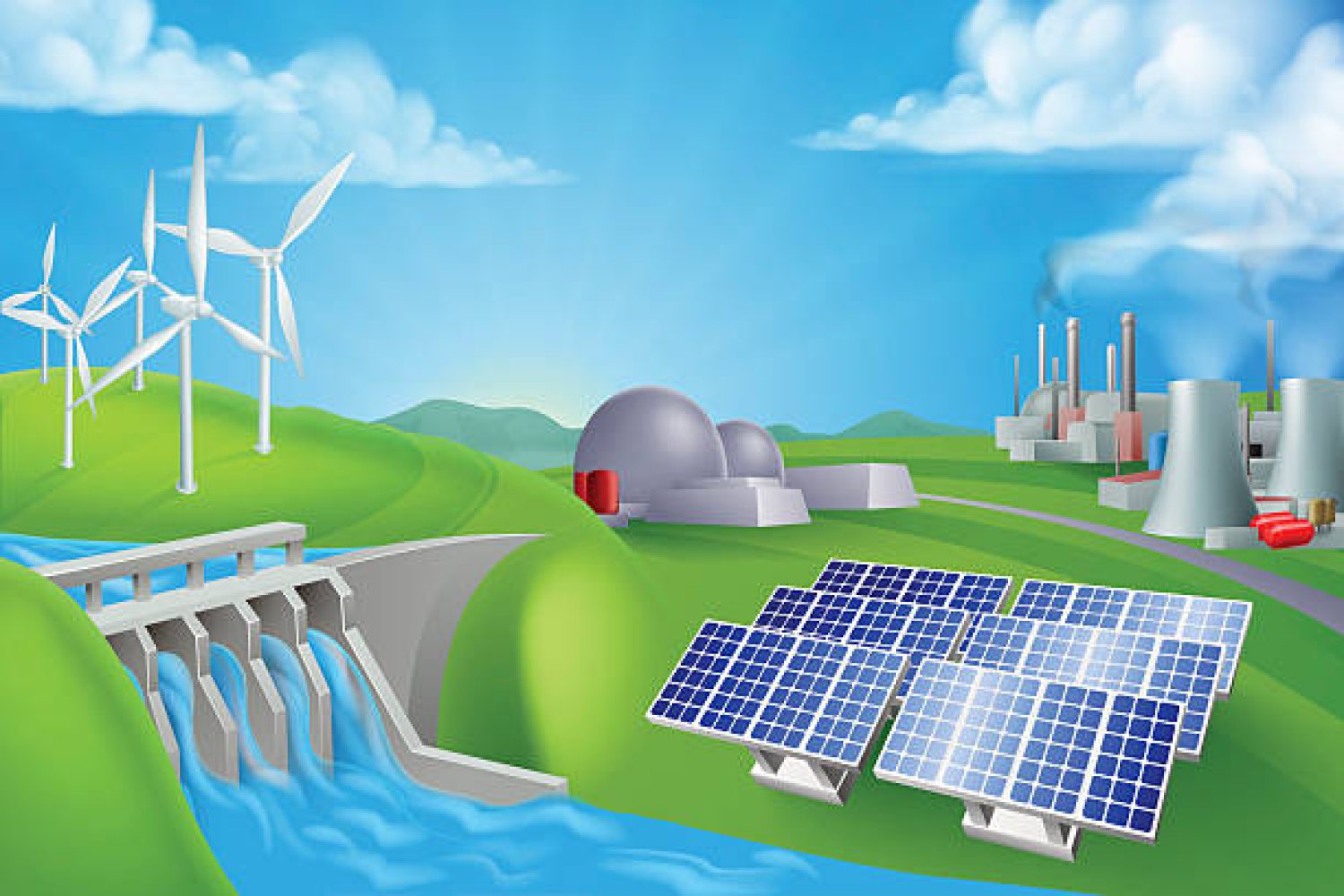Ammonium Molybdate Hydrogel Boosts Photoenergy Harvesting – Bioengineer.org

Report on Photoenergy Harvesting by Ammonium Molybdate Hydrogel Droplets and its Contribution to Sustainable Development Goals
1.0 Executive Summary
A 2025 study by Lu, Z., et al. introduces a novel photoenergy harvesting system utilizing ammonium molybdate integrated into soft hydrogel droplets. This report analyzes the technology’s core mechanisms, performance characteristics, and significant alignment with several United Nations Sustainable Development Goals (SDGs). The innovation presents a scalable, efficient, and environmentally benign platform for clean energy conversion, directly supporting SDG 7 (Affordable and Clean Energy), SDG 9 (Industry, Innovation, and Infrastructure), SDG 12 (Responsible Consumption and Production), and SDG 13 (Climate Action), with further implications for other global goals.
2.0 Technological Innovation and Alignment with SDG 7: Affordable and Clean Energy
The research details a groundbreaking method for converting solar energy into chemical energy, directly contributing to the objective of increasing the share of renewable energy as outlined in SDG 7. The system’s effectiveness is rooted in its unique material composition and structural design.
- Mechanism: The hydrogel droplets function as microreactors where ammonium molybdate catalyzes light-induced redox reactions, efficiently capturing and storing photoenergy.
- Enhanced Efficiency: The soft, flexible nature of the hydrogel enhances light scattering and absorption, leading to a photoconversion efficiency competitive with leading soft material systems.
- Durability and Stability: The system demonstrates longevity through repeated catalytic cycles without significant degradation, addressing a critical requirement for practical, long-term clean energy solutions.
3.0 Contributions to Sustainable Industry and Infrastructure (SDG 9 & SDG 11)
The technology’s design and fabrication process are inherently scalable, promoting the development of clean and environmentally sound industrial processes as targeted by SDG 9. This fosters innovation and supports the creation of sustainable infrastructure.
- Scalable Manufacturing: The hydrogel droplets can be produced in large quantities using facile aqueous processing techniques like continuous emulsification and microfluidics.
- Cost-Effectiveness: Ease of manufacturing suggests a pathway to reduced production costs, making the technology more accessible for widespread deployment.
- Advanced Applications: Potential integration into wearable solar devices and self-powered sensors supports the development of smart, sustainable cities and communities (SDG 11).
4.0 Environmental Sustainability and Responsible Production (SDG 12 & SDG 13)
This technology strongly aligns with SDG 12 by promoting responsible production patterns through its environmentally conscious material composition. This inherently supports climate action (SDG 13) by providing a sustainable alternative to fossil fuels and resource-intensive energy technologies.
- Benign Materials: The system is primarily composed of water and biocompatible polymers, avoiding the rare, toxic, or hazardous elements common in conventional photovoltaic devices.
- Reduced Environmental Impact: The eco-friendly profile minimizes pollution and waste, contributing to the sustainable management of natural resources.
- Adaptive Properties: The material exhibits self-healing and shape-reconfiguring behaviors, enhancing durability and reducing the need for replacement, which further supports sustainable consumption.
5.0 Broader Implications and Future Potential for Global Goals
The versatility of the ammonium molybdate hydrogel platform extends its impact beyond energy generation, offering a modular framework to address a wider range of sustainable development challenges.
- Environmental Remediation: The platform can be adapted for pollutant degradation, directly supporting SDG 6 (Clean Water and Sanitation) and the protection of ecosystems under SDG 14 (Life Below Water) and SDG 15 (Life on Land).
- Clean Fuel Production: Future modifications could tailor the system for hydrogen production from water, advancing a key component of a clean energy economy (SDG 7).
- Climate Change Mitigation: The technology could be engineered for carbon dioxide reduction, offering a direct pathway to combatting climate change (SDG 13).
6.0 Conclusion
The research on ammonium molybdate soft hydrogel droplets represents a significant advancement in materials science with profound implications for sustainable development. By offering an efficient, scalable, and environmentally friendly method for solar energy harvesting, this technology provides a tangible pathway toward achieving key targets within the Sustainable Development Goals, particularly those related to clean energy, sustainable industry, responsible production, and climate action. Its foundational framework promises to accelerate innovation in materials designed to meet global sustainability challenges.
1. Which SDGs are addressed or connected to the issues highlighted in the article?
The article on ammonium molybdate hydrogel droplets for photoenergy harvesting connects to several Sustainable Development Goals (SDGs) by focusing on the development of a novel, efficient, and environmentally friendly energy technology. The primary SDGs addressed are:
- SDG 7: Affordable and Clean Energy: The core subject of the article is a “groundbreaking advancement” in “sustainable energy harvesting” and “eco-friendly energy technologies.” The research aims to create a new method for capturing and converting light energy, directly contributing to the goal of ensuring access to clean and renewable energy.
- SDG 9: Industry, Innovation, and Infrastructure: The article describes a “pioneering approach” and a “leap forward in material science,” highlighting scientific research and technological innovation. It also discusses the “industrial scalability” and “ease of fabrication” of the technology, which relates to building resilient infrastructure and fostering innovation.
- SDG 12: Responsible Consumption and Production: The technology is presented as a sustainable alternative to conventional methods that may use harmful materials. The article emphasizes its “exceptional environmental compatibility” and “environmentally benign profile,” as it is “composed primarily of water and biocompatible polymers” and avoids “rare or toxic elements,” aligning with the goal of sustainable production patterns.
- SDG 13: Climate Action: By developing a more efficient solar energy conversion technology, the research offers a solution to reduce reliance on fossil fuels, which is a primary driver of climate change. The article notes that the innovation “aligns perfectly with the global imperative to transition toward green energy sources,” directly supporting climate change mitigation efforts.
2. What specific targets under those SDGs can be identified based on the article’s content?
Based on the article’s discussion of the new technology, several specific SDG targets can be identified:
-
Under SDG 7 (Affordable and Clean Energy):
- Target 7.2: “By 2030, increase substantially the share of renewable energy in the global energy mix.” The research directly supports this target by introducing a novel material system that “adeptly transforms photoenergy with unprecedented efficiency,” aiming to improve the viability and performance of solar energy, a key renewable source.
- Target 7.a: “By 2030, enhance international cooperation to facilitate access to clean energy research and technology… and promote investment in energy infrastructure and clean energy technology.” The publication of this research in a scientific journal like Light: Science & Applications is an act of sharing knowledge and facilitating access to cutting-edge clean energy research for the global scientific community.
-
Under SDG 9 (Industry, Innovation, and Infrastructure):
- Target 9.5: “Enhance scientific research, upgrade the technological capabilities of industrial sectors in all countries… encouraging innovation.” The article is a testament to this target, describing a “remarkable stride forward in the quest for efficient, flexible, and sustainable photoenergy harvesting technologies” that resulted from interdisciplinary scientific research.
- Target 9.4: “By 2030, upgrade infrastructure and retrofit industries to make them sustainable, with increased resource-use efficiency and greater adoption of clean and environmentally sound technologies.” The hydrogel technology, with its “ease of fabrication,” “scalability,” and “environmentally benign profile,” represents the kind of clean and sound technology this target aims to promote.
-
Under SDG 12 (Responsible Consumption and Production):
- Target 12.4: “By 2020, achieve the environmentally sound management of chemicals and all wastes throughout their life cycle… and significantly reduce their release to air, water and soil.” The article highlights that the technology is a “sustainable alternative to conventional photovoltaic and photoelectrochemical devices that rely on rare or toxic elements,” directly contributing to reducing the use and potential release of hazardous materials in the energy sector.
-
Under SDG 13 (Climate Action):
- The development of this technology is an implicit action towards climate change mitigation. While no specific target is explicitly mentioned, the entire effort to create a new form of clean energy contributes to the overarching goal of combating climate change. The potential for the technology to be tailored for “carbon dioxide reduction” further strengthens this link.
3. Are there any indicators mentioned or implied in the article that can be used to measure progress towards the identified targets?
The article provides several direct and implied indicators that can be used to measure progress towards the identified targets:
-
For SDG 7 Targets:
- Photoconversion Efficiency: The article explicitly states that the hydrogel droplets exhibit “photoconversion efficiencies competitive with some of the best-performing soft material systems.” This efficiency rate is a direct quantitative indicator of the technology’s performance and its potential contribution to increasing the share of renewable energy (Target 7.2).
- System Longevity/Durability: The text mentions that the system shows “repeated catalytic cycles without significant degradation, attesting to the system’s longevity.” This durability is a crucial performance indicator for the real-world application and adoption of clean energy technologies (Target 7.a).
-
For SDG 9 Targets:
- Number of Scientific Publications and Innovations: The article itself, a publication in a high-impact journal, serves as an indicator of ongoing scientific research and innovation in the field of sustainable technology (Target 9.5).
- Scalability of Manufacturing: The article points to the “scalability of droplet formation, achieved via facile aqueous processing techniques” and “industrial-scale production.” The ease and scale of manufacturing are practical indicators of a technology’s readiness for industrial adoption (Target 9.4).
-
For SDG 12 Targets:
- Material Composition: The description of the material as being composed of “water and biocompatible polymers” and avoiding “rare or toxic elements” is a qualitative indicator. It can be measured by comparing the material composition of this new technology against conventional ones, tracking the reduction in hazardous substances (Target 12.4).
-
For SDG 13 Targets:
- Potential for Carbon Dioxide Reduction: The article suggests the platform could be modified for “carbon dioxide reduction.” The measured rate of CO2 reduction by such a system would be a direct indicator of its contribution to climate change mitigation.
4. Table of SDGs, Targets, and Indicators
| SDGs | Targets | Indicators |
|---|---|---|
| SDG 7: Affordable and Clean Energy | 7.2: Increase substantially the share of renewable energy in the global energy mix.
7.a: Facilitate access to clean energy research and technology. |
– Photoconversion Efficiency: The rate at which the hydrogel converts light to energy. – System Longevity: Measured by the number of catalytic cycles without significant degradation. |
| SDG 9: Industry, Innovation, and Infrastructure | 9.5: Enhance scientific research and encourage innovation.
9.4: Upgrade industries with clean and environmentally sound technologies. |
– Number of Scientific Publications: The article itself is an output of scientific research. – Scalability of Manufacturing: The potential for “industrial-scale production” using “facile aqueous processing techniques.” |
| SDG 12: Responsible Consumption and Production | 12.4: Achieve the environmentally sound management of chemicals and wastes. | – Material Composition: Use of “water and biocompatible polymers” instead of “rare or toxic elements.” |
| SDG 13: Climate Action | Contribute to climate change mitigation efforts. | – Potential for Carbon Dioxide Reduction: The implied capability of the technology to be adapted for CO2 reduction applications. |
Source: bioengineer.org
What is Your Reaction?
 Like
0
Like
0
 Dislike
0
Dislike
0
 Love
0
Love
0
 Funny
0
Funny
0
 Angry
0
Angry
0
 Sad
0
Sad
0
 Wow
0
Wow
0















































/environment-climate-change-and-health-(ech)/water-sanitation-hygiene-and-health-(wsh)/landfill-tuvalu-36092.tmb-1200v.jpg?sfvrsn=5c21fe40_1#)


.jpg.webp?itok=0ZsAnae9#)

























